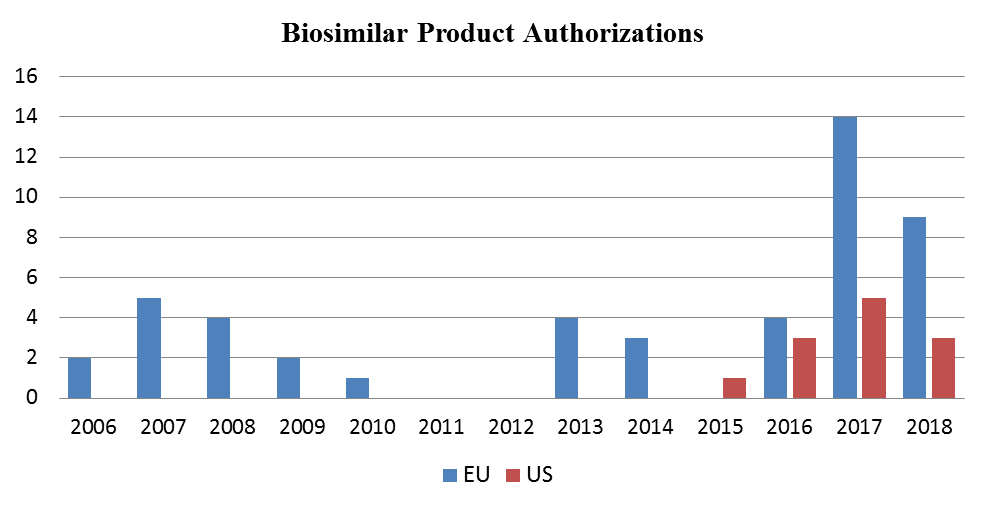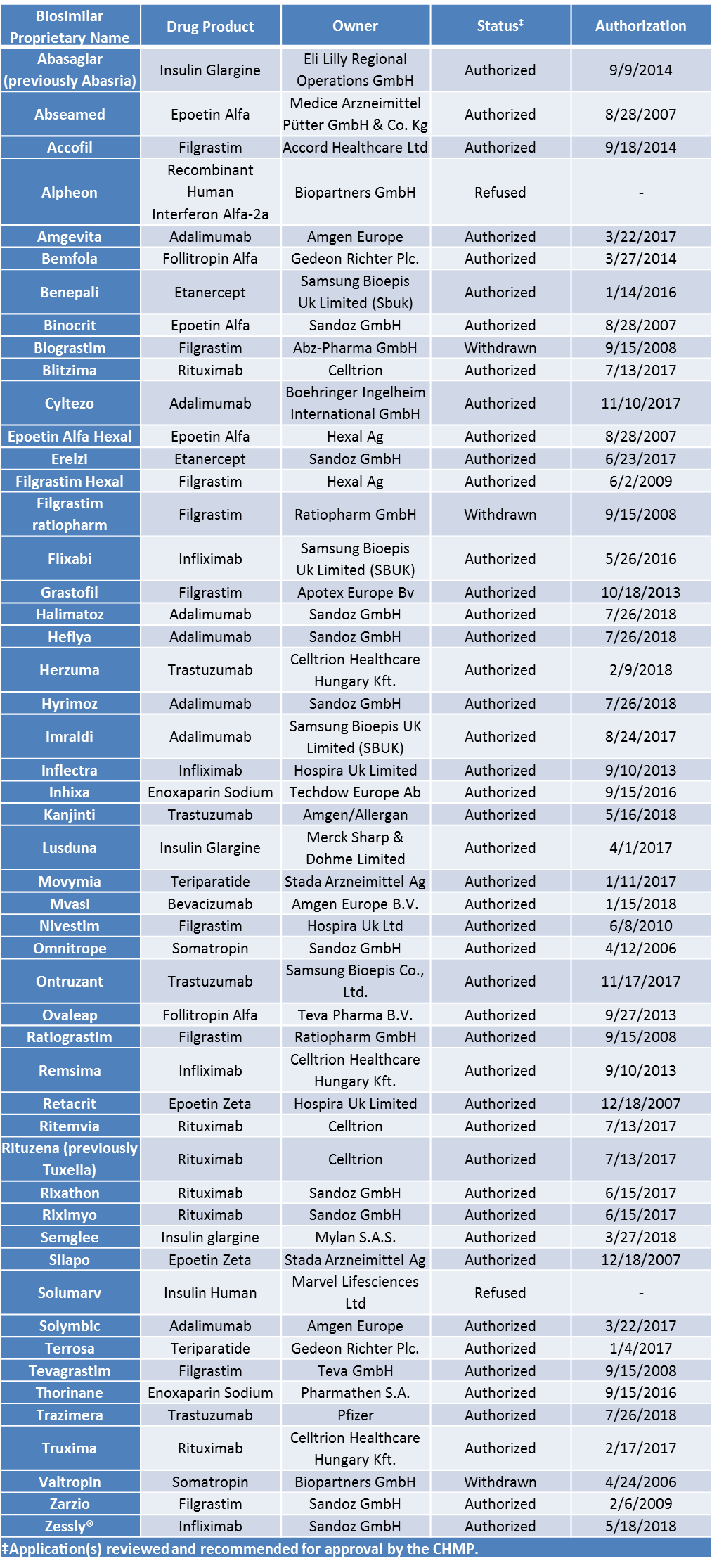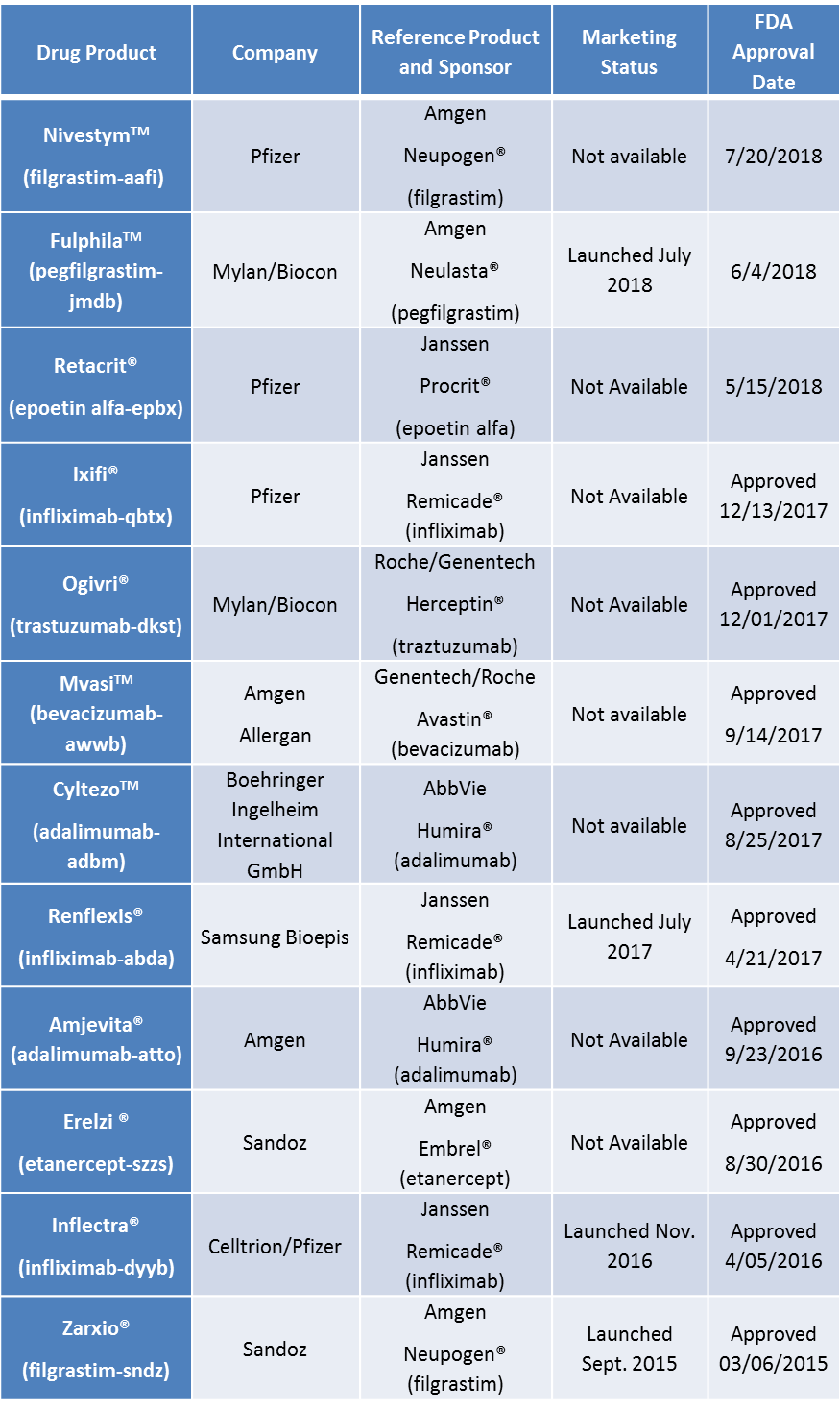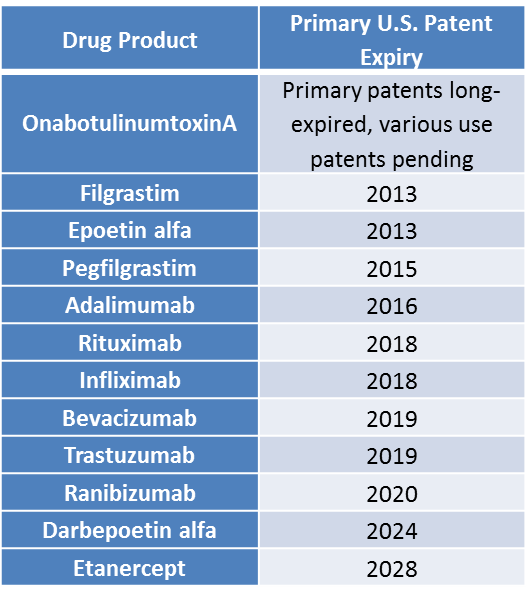- FDA approves first Neulasta® (pegfilgrastim) and Procrit® (epoetin alfa) biosimilars and second Neupogen® (filgrastim biosimilar)
- European Medicines Agency approves third and fourth trastuzumab, fourth infliximab, and fifth, sixth and seventh adalimumab biosimilars
- Only four of twelve approved biosimilars have launched in the United States
As pharmaceutical drug costs attract increasing media attention and political scrutiny, a growing number of biosimilar drugs are set to enter the U.S. and European markets in the coming years. Global sales for the top ten branded biologic drugs totaled approximately $71 billion in 2017[1]. Competition in the heavily regulated marketplace for these blockbuster therapeutics is expected to substantially impact the pharmaceutical industry and national health systems. To date, the U.S. has considerably lagged behind Europe’s expansion of biosimilar drug options. The RAND Corporation estimates that biosimilar products can save the U.S. health system approximately $54 billion over the next decade, as discussed here.
Since 2005, the biosimilar regulatory framework in Europe has been implemented through the Committee for Medicinal Products for Human Use (CHMP) under the European Medicines Agency (EMA). The CHMP provides initial assessments for marketing authorization of new medicines that are ultimately approved centrally by the EMA. Since Sandoz’s somatotropin biosimilar Omnitrope® was first authorized on April 12, 2006, an additional 45 out of 50 applications have been approved in Europe. Three of the authorizations have been withdrawn post-approval by the marketing authorization holders (Table 1 ).
The U.S. did not implement a regulatory framework for biosimilar evaluation until after enactment of the Biologics Price Competition and Innovation Act (BPCIA) of 2009. Given that the first U.S. biosimilar drug was approved almost a decade after the first in Europe, the number of authorized biosimilar drugs in Europe far exceeds the number of biosimilars approved in the United States. Sandoz’s filgrastim biosimilar Zarxio® received the first U.S. approval in 2015, whereas nine filgrastim biosimilars have been approved in Europe dating back to multiple authorizations in 2008. Zarxio® (in the U.S.) and Zarzio® (in Europe) are biosimilar to the reference product Neupogen® marketed by Amgen and originally licensed in 1991. Subsequent to Zarxio®’s approval, only eleven other biosimilar drugs have gained U.S. approval to date (Table 2). As illustrated in the following graph, the EU’s significant head start led to the existent imbalance in the number of biosimilar drugs available in the respective markets.

Currently, fifteen biosimilar applications are under review by the EMA for marketing authorization (Table 3). As an increasing number of patents expire on blockbuster biologic drugs, the number of abbreviated biologics license applications is also increasing. Biosimilars for at least twelve different original biologics are currently navigating the United States Food & Drug Administration’s (FDA’s) biosimilar pathway or are in late stage development (Table 4). Interestingly, Neulasta® (pegfilgrastim) biosimilars have failed to gain approval in Europe thus far and the FDA finally approved the first pegfilgrastim biosimilar in June 2018. There are currently eight applications for pegfilgrastim pending in Europe.
On May 15, 2018, Pfizer announced that the FDA approved Retacrit®, the first biosimilar to Epogen® and Procrit® (epoetin alfa), for all indications of the reference product as reported here. RETACRIT is now the first and only biosimilar erythropoiesis-stimulating agent (ESA) to be approved in the U.S. No launch date was announced.
On May 16, 2018, the EMA approved KanjintiTM, the third trastuzumab biosimilar to Roche’s Herceptin® in Europe. The EMA previously approved Celltrion’s HerzumaTM in February 2018 and Samsung Bioepis’ Ontruzant TM in November 2017. On June 1, 2018, Amgen reported that the FDA had issued a complete response letter rejecting Kanjinti and that it “would work closely with the FDA to bring this important medicine to patients in the U.S.”
On June 4, 2018, Mylan announced that the FDA approved FulphilaTM, the first biosimilar pegfilgrastim available in the U.S. for reducing the risk of infection following myelosuppressive chemotherapy in patients with nonmyeloid cancers as reported here. FulphilaTM is the second FDA-approved biosimilar through the Mylan-Biocon collaboration. Mylan stated that it anticipated launching FulphilaTM “in the coming weeks.” In late July 2018, Mylan reportedly launched Fulphila in the United States marketplace.
On July 20, 2018, Pfizer announced that the FDA approved NivestymTM, the second biosimilar filgrastim available in the U.S. No launch information was provided.
Given biosimilar applicant experience in navigating the EMA process and the EMA’s high authorization rate, the FDA will need to continue to provide useful guidance and streamline the approval process in order to reduce the imbalance.
Table 1. European Medicines Agency List of Approved Biosimilar Drugs (updated August 2, 2018).

Table 2. U.S. Food and Drug Administration List of Approved Biosimilar Drugs (CDER list of licensed biologics updated on July 24, 2018).

Table 3. European Medicines Agency List of Biosimilars Under Evaluation for Marketing Approval (Source: EMA list of applications for new human medicines updated on July 13, 2018).

Table 4. Biologics having already expired or nearing primary patent expiry in the U.S. that have biosimilars in the regulatory pipeline.

[1] Based on sales reported by respective manufacturers (1. Humira—Abbvie, 2. Rituxan—Roche, 3. Enbrel—Pfizer/Amgen, 4. Herceptin—Roche, 5. Avastin—Roche, 6. Remicade—Johnson & Johnson/Merck, 7. Lantus—Sanofi, 8. Neulasta—Amgen, 9. Avonex—Biogen, 10. Lucentis—Roche/Novartis).
